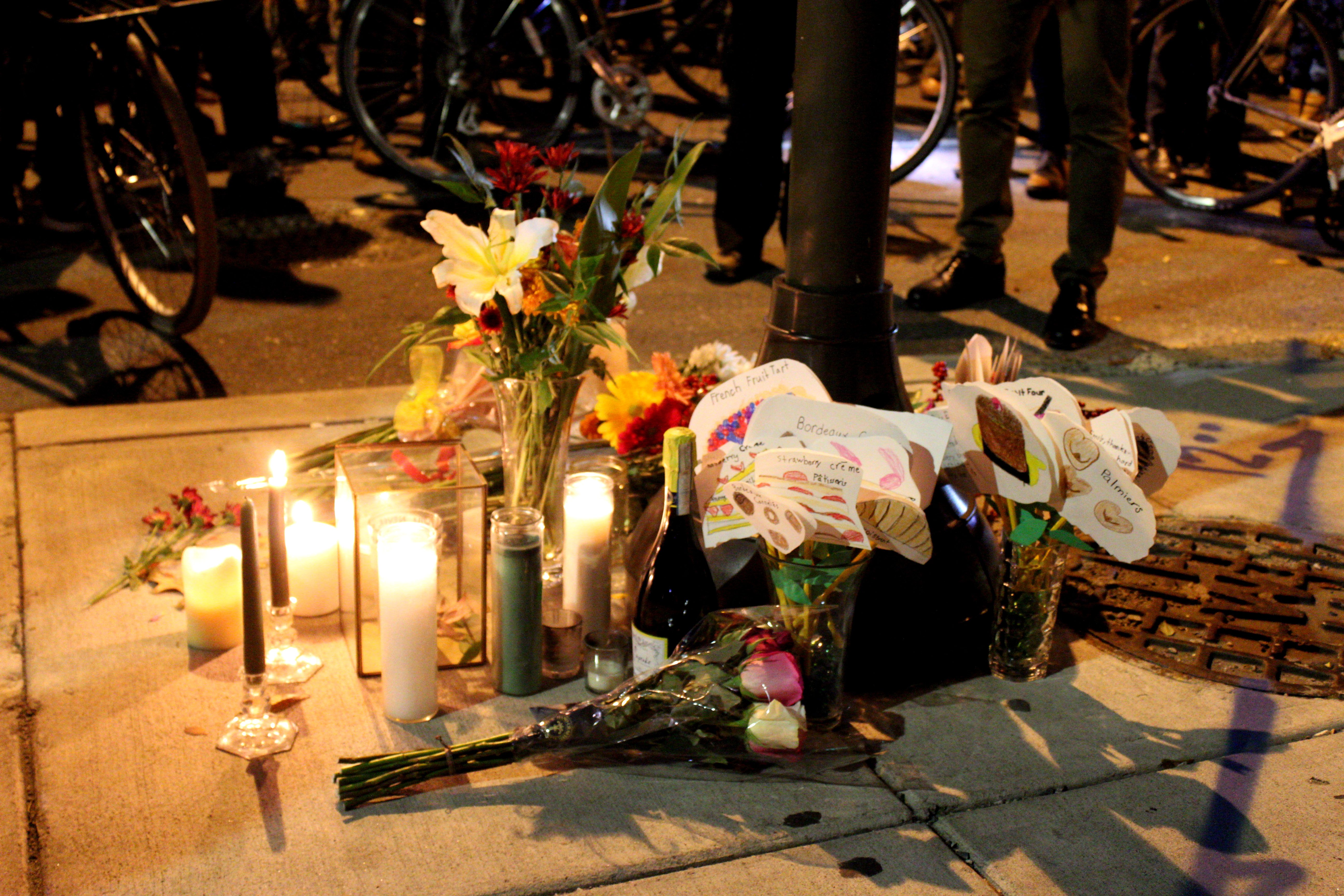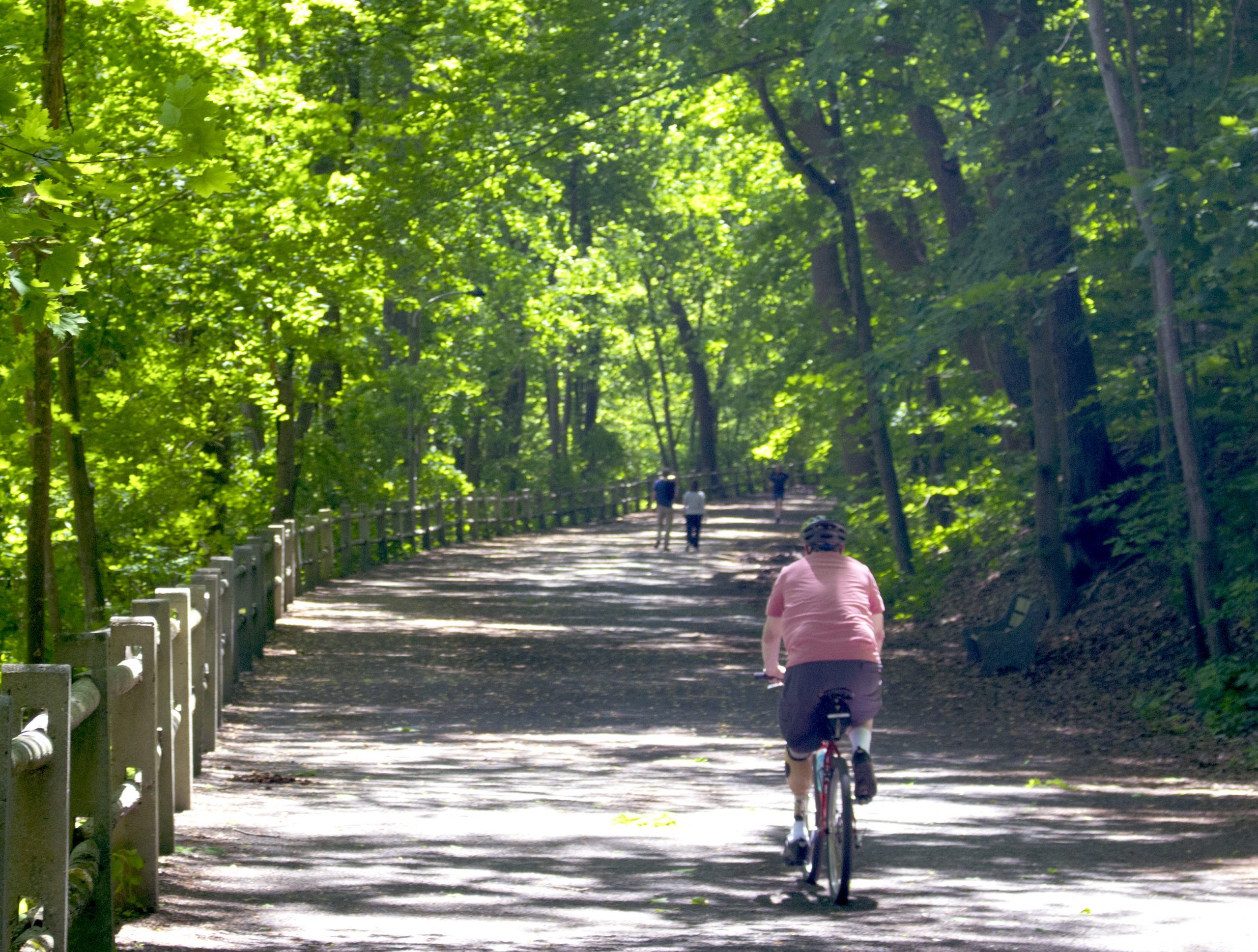
The Council’s GoPhillyGo trip planner is the best way to get car-free multimodal directions in the Philadelphia region. Now, the new GoPhillyGo “Tours” section allows users to navigate between three or more destinations that are close in proximity or share a common theme.
For example, when you plan a trip to Wissahickon Valley Park, use the premade tour to navigate from the Toleration Statue to the Fingerspan Bridge, then to the Valley Green Inn for a bite to eat along the creek. Use “Tours” to find gateways and trailheads for regional greenways like the Schuylkill River Trail, Cobbs Creek Trail, and Tacony Creek Trail.
Mobile sources are the number one source of air pollution in the Philadelphia region, and each time you plan a car free trip on GoPhillyGo, you are doing your part to reduce air pollution . Double down on your commitment to sustainability and check out the new “Tours” section on GoPhillyGo.
For more information on the Council’s GoPhillyGo program email Ptah Gabrie at pgabrie@cleanair.org
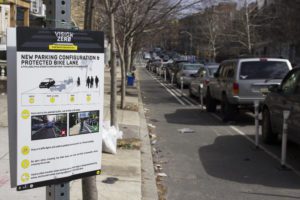
Clean Air Council joined the Bicycle Coalition and other Vision Zero Alliance advocates for a day of action on Tuesday, April 30th in Harrisburg. Advocates spoke to State Representatives and Senators about critical legislation needed to make streets safer for all road users.
If passed, this legislation would allow comprehensive integrated protected bike lane networks throughout Pennsylvania, create safe cycling and pedestrian spaces, and reduce dependence on automobiles. Protected bike lanes make bicycling safer, and are one of the best ways to protect pedestrians.
Pennsylvania State Senate Bill 565 (SB 565) and its companion House Bill 792 (HB 792) would allow pedestrian plazas and bike lanes on state roads to be separated and protected by parked cars. The bill was sponsored and introduced yesterday by 1st District State Senator Larry Farnese of Philadelphia.
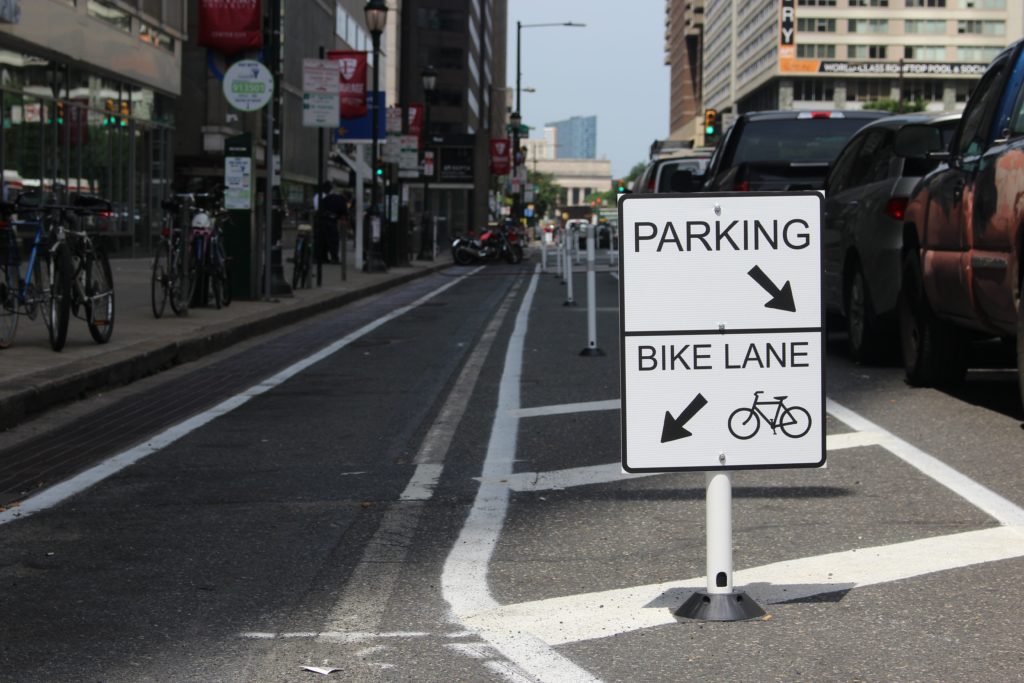
On state roads, pedestrians are 6.5 times more likely to die in crashes than non-pedestrians. While similar numbers of pedestrians involved crashes occur on local roads, 75% of pedestrian crashes that result in a fatal injury are on state roads. Protected bike lanes reduce traffic speeds by narrowing the road, calm intersections by reducing the turning radius, and create a shorter crossing distance for pedestrians.
House Bill 37, another important bill the Council advocates for, would ban hand-held cell phones while driving. The Fredricks family, whose daughter Emily was killed on her bicycle by a distracted driver while biking in the bike lane near 11th and Spruce Streets in Center City, spoke to legislators about their daughter and asked Senators and Representatives to pass legislation to prevent other families from experiencing similar tragedies. Distracted driving caused by cell phone use is a major cause of bicycling and pedestrian fatalities in Pennsylvania, and quadruples the risk of a crash. The Council asked legislators to join neighboring states New Jersey, Delaware, and Maryland in banning hand-held phones while driving.
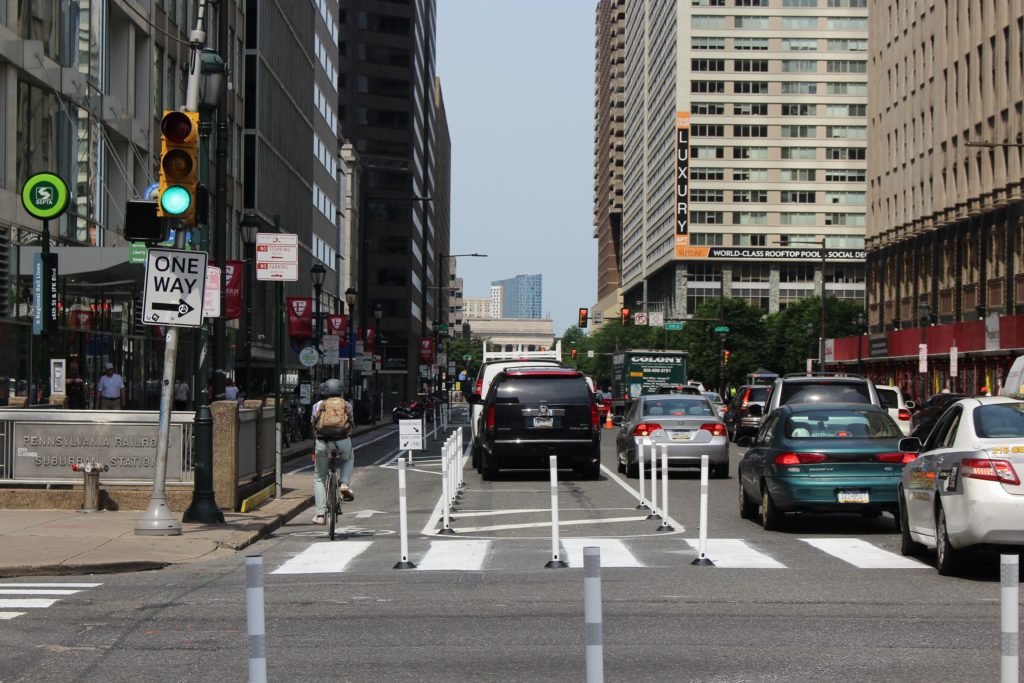
The Council also asked legislators to bring two bills to the floor that would have a major impact on road user safety. The first, a radar bill, (HB-1275) would allow municipal police to use radar technology. Pennsylvania is currently the only state in the country that does not allow municipal police from using radar to detect vehicle speeds. Speed is the largest predictor of how serious a crash can be. The difference of just 5 or 10 miles an hour can mean life or death.
Pennsylvania can more effectively slow drivers down by putting radar technology in hands of law enforcement across the Commonwealth. The second bill, yet to be introduced, would protect vulnerable road users including pedestrians, motorcyclists, horse and carriages, farm equipment, and others by requiring a minimum of four feet to pass. Many parts of the state do not have sidewalks, especially on the particularly dangerous state roads, and vulnerable road users must be afforded the protection of a minimum passing distance.
Creating safer roads for everyone is a common theme throughout all the bills presented to legislators on this day of action. Everyone has the right to travel safely, and a bipartisan focus on reducing traffic deaths, will create safer roadways for all users.
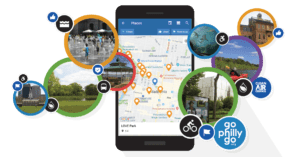
Philadelphia, PA (August 21, 2018) — Since 2015, GoPhillyGo.org has helped people get around the Greater Philadelphia area without a car. Now it’s better than ever with a new app that helps you discover the region.
GoPhillyGo is a project of Clean Air Council and funded by a grant from the William Penn Foundation. The free trip planning site can take you anywhere in the Greater Philadelphia region, including Delaware and New Jersey, without a car. GoPhillyGo gives you directions for biking, walking, taking public transit and is the only multimodal trip planner in the Philadelphia region that allows you to combine any of these modes into one trip.
There are always things to discover in the Philly region, and the new app makes it even easier to find out what’s near you and how to get there. Open the app, and allow GoPhillyGo to use your location to generate a list of nearby places to visit.
Kathryn Killebrew — project technical lead, and Azavea software developer — says “We’re excited to be offering a new GoPhillyGo Android app to complement https://gophillygo.org. You’ll discover fun and surprising things around you, including nature centers and family-friendly events. In building this app, Azavea continues its commitment to contributing open source technology that makes a positive social and environmental impact, and I’m glad to have taken part.”
Turn on Notifications, and the GoPhillyGo app will tell you what destinations are nearby. Users can filter search results by activity type and accessibility. Categories focus on Nature, Exercise, Educational, Cycling, Hiking, and Water Recreation. You can filter for wheelchair accessibility. You can organize your results by tagging them as Been, Want To Go, Not Interested, or Liked. And each destination listing includes the activities you can do there, a map, their website link, and — of course — GoPhillyGo.org’s directions on how to get there without a car. Walk, ride, and bike with the help of GoPhillyGo.
Nick Zuwiala-Rogers of Clean Air Council says “Transportation is the leading cause of greenhouse gas emissions in the U.S., and Clean Air Council is committed to reducing pollution from private vehicles. Our goal is to make it easier to get around without a car, and the GoPhillyGo app is an important part of that effort.”
Take a look for yourself. Screenshots of the app are available here.
The initial release is Android-only, with an iPhone version planned for the future.
GoPhillyGo.org. Your destination ahead. Your map to getting there.
Clean Air Council is a member-supported environmental organization serving the Mid-Atlantic Region. The Council is dedicated to protecting and defending everyone’s right to breathe clean air. The Council works through a broad array of related sustainability and public health initiatives, using public education, community action, government oversight, and enforcement of environmental laws.
PHILADELPHIA, PA (June 4, 2018)- Clean Air Council joined other advocates testifying at City Council in support of the proposed changes to Spruce and Pine Streets in Center City. The project would include protecting intersections and moving the bike lane to the left side of the road where there is a smaller blind spot for drivers. These changes would increase safety and make non-motorized travel along these streets more comfortable and enjoyable. Read the Council’s testimony below to understand why it supports the proposal now, and what it would like to see in the future.
Thank you for the opportunity to present testimony on behalf of Clean Air Council today. My name is Nick Zuwiala-Rogers and I am the Transportation Program Director at Clean Air Council. My work includes promoting sustainable modes of transportation like public transit, walking, and cycling.
Clean Air Council is one of the Philadelphia region’s oldest environmental organizations, serves thousands of members in the city, and has a mission to protect everyone’s right to breathe clean air. The Council supports the proposed project on Spruce and Pine and the associated bills to change parking along these roads, and believes it will help improve air quality in Philadelphia.
According to the U.S. Energy and Information Administration (EIA), the transportation sector has produced more carbon pollution than any other sector since 1979. The EIA has cited the country’s over reliance on single-occupancy vehicle travel and a failure to prioritize non-driving modes of transportation as having a profound impact on this result. Philadelphia needs to do better at prioritizing other modes of transportation like walking, public transportation, and bicycling, and this project offers an opportunity to do that.
Due to the congestion that this City Council has noted recently, center city has some of the worst localized air quality in the city. Therefore, increasing the number of people getting around without using a car should be a priority for this Council. Increasing the safety and comfort of cyclists and pedestrians is the only way to make that happen.
Protected bike lanes are a proven solution for making all road users safer, and getting more people comfortable biking, thereby increasing mode share away from congestion-creating automobiles downtown. A Federal Highway Administration study found 96% of cyclists feel safer riding in a protected bike lane, and safety for cyclists and vehicles improved in nearly every aspect where flex posts or parking protected bike lanes were installed. A physical separation reduces traffic speeds, calms intersections by reducing the turning radius and forcing slower speeds, and creates a shorter crossing distance for pedestrians. I understand that is not what is proposed today, but I should be clear that physical protected bike lanes are ultimately what the Clean Air Council supports.
While this project does not go as far as creating the protected bike lanes that should eventually be installed on these roads, the protections at intersections and the move from right to left side of the street offer key incremental changes that will make road users safer on Pine and Spruce Streets. Importantly, the protected intersections that are a part of this project would help to prevent crashes like the two last year that ended fatally for one person, and with nearly the same result for another. The move to the left side of the road will decrease the space that a cyclist is in a vehicle’s blind spot, especially trucks which are so deadly.
These two roads are the main arterials across center city for cyclists, and are two of the most used bike lanes in the city. The current design is frankly way behind the times and way behind where a city like Philadelphia needs to be with its infrastructure. These safety improvements are not just needed, they are long overdue, and Clean Air Council strongly urges you to support the proposed bills in front of you today.
Thank you for the opportunity to speak with you this afternoon, I’d be happy to take any questions now or discuss any of these matters more with you outside of this meeting.
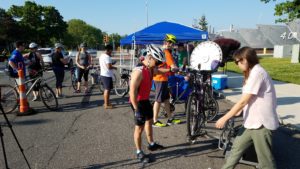
Join Clean Air Council, PIDC, GoPhillyGo, and South Philly Bikes for the Navy Yard’s 2018 Bike to Work Day on Friday, May 18th, 2018 from 7:30 -10:00am. A support station will be located inside the Broad St. Navy Yard gate with free coffee, doughnuts, spin-wheel giveaways, an expert bike mechanic, and tire air for those who need an extra pump for the ride home.
Clean Air Council will have information on commuter benefits and GoPhillyGo will be on site to offer safety tips and help plan your next bike trip in or around Philadelphia. A SEPTA/Navy Yard bus bike rack will be on site to practice how to load your bike all in the comfort of a protected pop up bike lane. Register for Bike to Work Day to pick up a swag bag at eventbrite.

Philadelphia has the highest rate of traffic deaths per capita in the US. According to a National Highway Traffic Safety Administration report using data from 2015, six people for every 100,000 residents died in a traffic related incident. That’s over three times higher than Boston, and more than twice as high as New York City. Cyclists and pedestrians make up 45% of those killed in these traffic incidents.
It’s important to acknowledge these are not accidents, but instead preventable crashes that need to be addressed immediately. Sadly, action will come too late for Emily Fredricks who was killed by a private garbage truck as she rode in the bike lane along Spruce Street last week.
Cyclists who spend any amount of time commuting through Center City know this heavily trafficked area can be extremely dangerous. According to the Bicycle Coalition, a 2015 study counted 212 cyclists per hour passing through 13th and Spruce, just two blocks away from the crash. Emily’s death shows that painted bike lanes no longer meet the demands of increased bicycle traffic in this section, and protected bike lanes must be installed along Spruce and Pine Streets to prevent future fatalities.

How to protect cyclists along Spruce and Pine was the first topic discussed at a recent public meeting hosted by 5th Square, Bicycle Coalition of Philadelphia, and Urban Consulate. A panel of guests including Michael Carroll, Deputy Managing Director of the Philadelphia’s Office of Transportation and Information Systems (OTIS), discussed a recent trip to Copenhagen where participants learned how that super bike friendly city operates.
However, after the panelists introduced themselves, Carroll felt the need to discuss the death of Emily Fredricks, and set the record straight on the city’s plan to add protected lanes along Spruce and Pine.
“There’s a couple things I’d like to see cleared up about that,” Carroll said. “Just to be clear there was never any point in design or plan to put any real kind of protection on Spruce and Pine.”
Carroll told the crowd of about 100 people that OTIS had been examining the possibility of protected lanes along those streets, but were in the extremely early stages of planning and securing grant money last year when news leaked to the public that they were looking into this.
“That information wasn’t really intended for broad public consumption but as things turned out it came out to the public that those were the two streets we were looking at, and that came back to the neighborhood,” Carroll said. “A lot of the folks in the neighborhood were upset.”
That outcry ultimately led to the plan being put on the backburner, and OTIS looked elsewhere for other areas that may have less resistance. According to Carroll, the administrative work to get a bike lane installed takes extremely long, and even if there was no resistance against Spruce and Pine, installation of protected lanes would not have begun until next year.
“From our perspective, we’ve got 2,500 miles of streets to look at, and there’s a lot of other candidates that were on that map that we felt like were better uses of our resources at that time to try and put protection in,” Carroll said. “Even if we had programmed those for installation, if we did find a clear path forward, this project would not have started until the Spring.”
Carroll did admit that more funding may have have helped avoid this tragedy.
“This is an instance where under more ideal circumstances, if money was available sooner, maybe we could have avoided a tragedy, but I don’t know that for a fact.” Prior to this incident, Philadelphia was securing funding and developed a plan to make sure money and ideas are available.
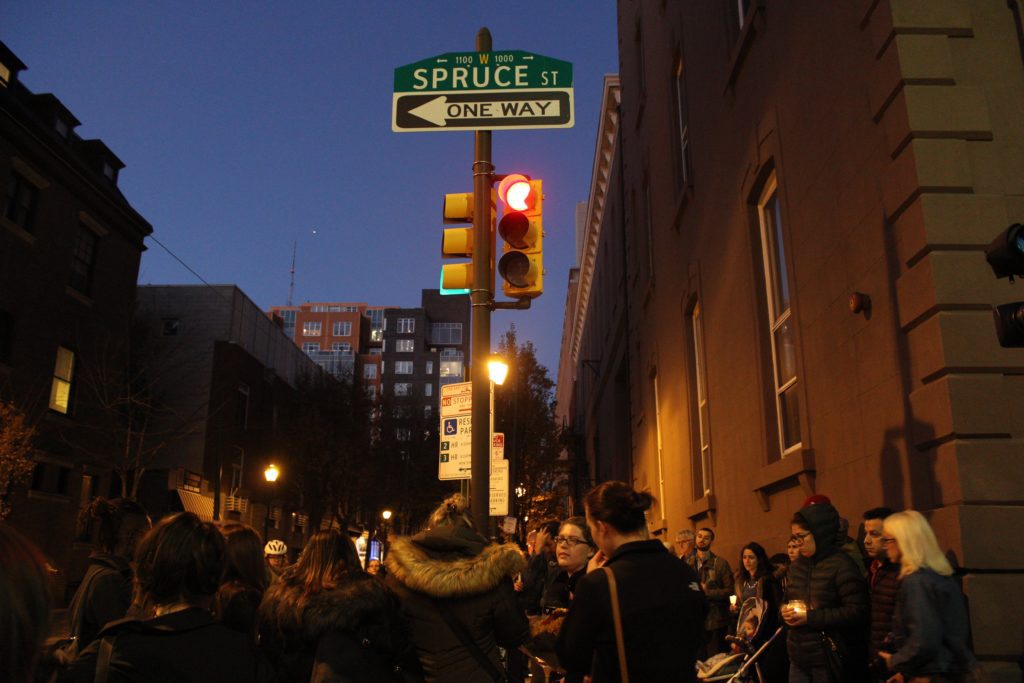
The city’s Vision Zero efforts include a plan to install 30 miles of protected bike lanes during Mayor Kenney’s administration. So far there are two miles. That leaves a lot of work to do, so the time is now for the Mayor’s office and City Council to move quickly on advancing these projects. The Vision Zero Task Force was created, and charged with forming a three year action plan. This plan was released earlier this fall, and you can read more about it here. The plan garnered plenty of local media attention and public support but so far little action from city government, specifically city council who since 2012 has had control over the implementation of protected bike lanes on city streets.
The last thing cyclists in Philly need is their safety in the hands of politicians, and that is exactly what is happening. The Office of Transportation and Infrastructure Systems (OTIS) needs to be in charge of these decisions, and make pedestrian and bicycle network development one of their key initiatives.
Perhaps a lack of funding for protected bike lanes is the problem? It’s not. In fact, funding has been secured on a state and federal level for pedestrian and cycling infrastructure. In March 2016, the city announced they had secured $2.67 million in federal funding with another $500,000 in local contributions to fund five projects under the “Transportation Alternatives Program” (TAP). The plan for cyclists is outlined in one of the projects. The press release states:
The final project, “Safe Spaces for Cyclists: Build a Protected Bike Network”, will include a mix of converting existing bicycle lanes into protected facilities and adding new protected bicycle lanes by adding flexible delineator posts to clearly separate vehicle and bicycle space in the right of way. The project also will include striping and signage in high priority bicycle corridors throughout the City.
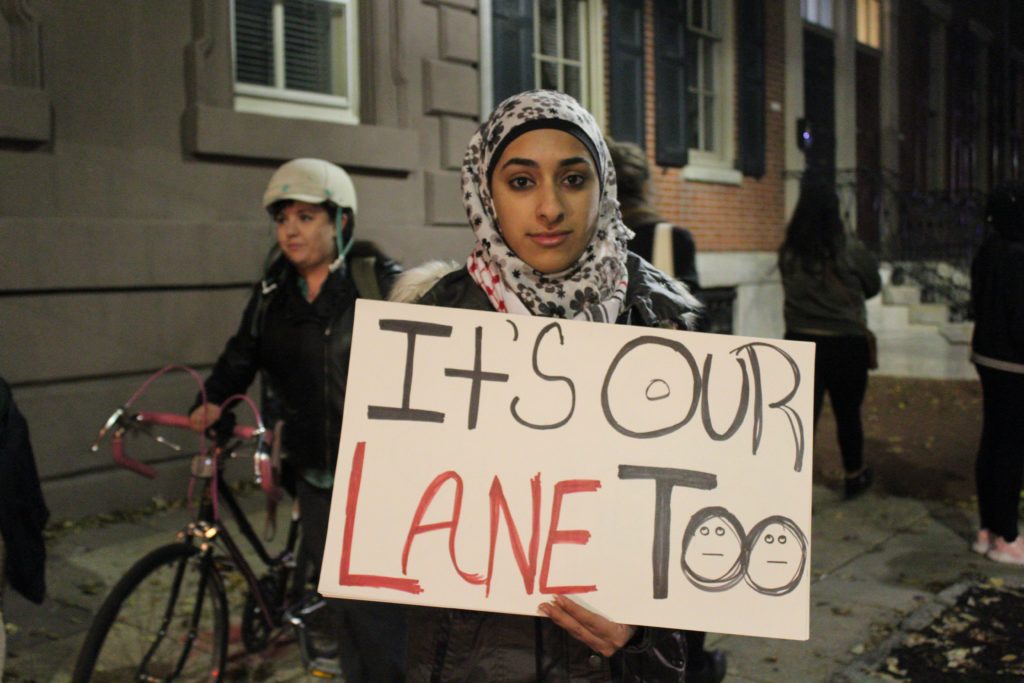
The money is there, the laws are written and plans have been drawn, so why are there still only two miles of protected bike lanes in Philadelphia? The problem is the overly politicized process of road safety. City council is not only guilty of inaction, but in some cases, council members work against the implementation of protected bike lanes under the guise of community outcry.
In 2011, Councilman Greenlee proposed a bill that would require city council to approve all new bike lanes. It was adopted in 2012, and since then council has actively worked against creating protected bike lanes throughout the city. Greenlee is still blocking a bike lane along 22nd street that was proposed in 2014. Councilwoman Blackwell, seems less supportive of the protected bike lane on Chestnut St in West Philadelphia, and recently told the Inquirer, “All I do is get complaints about the lack of access to Chestnut Street.”
Over the summer, Councilman Johnson wrote a letter to OTIS rejecting the planned protected bike lanes on South and Lombard Streets in West Center City. According to the Bicycle Coalition of Philadelphia, residents were concerned that they would not be able to pull into the bike lane to unload their vehicles.
Even the very stretch of Spruce St where Emily was killed has had a protected bike lane proposed and discussed publicly since last December at a Washington Square West Civic Association meeting. Public outcry over convenience has seemingly put the project on the shelf, and the city isn’t guaranteeing protected bike lanes will ever be installed along Spruce or Pine streets. Shortly after Emily’s death, the bike lane along Spruce Street was re-striped. This is simply too little too late, and still allows motorists to cross into the bike lane. City council must take the politics out of protected bike lanes, and start protecting the lives of people who choose to commute by bike.
Please take a moment to write or call your councilperson today. Tell them how important it is to you that they move forward on protected bike lanes, even at the expense of convenience for motorists. Explain that this is literally a matter of life and death in some cases, and you expect quick action from them. Do this especially if you are in Councilman Johnson or Councilman Squilla’s districts. Contact information to city council can be found here.
